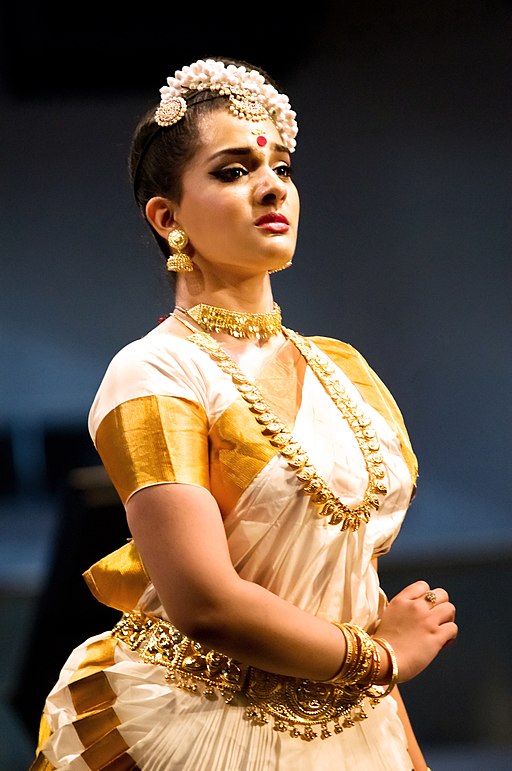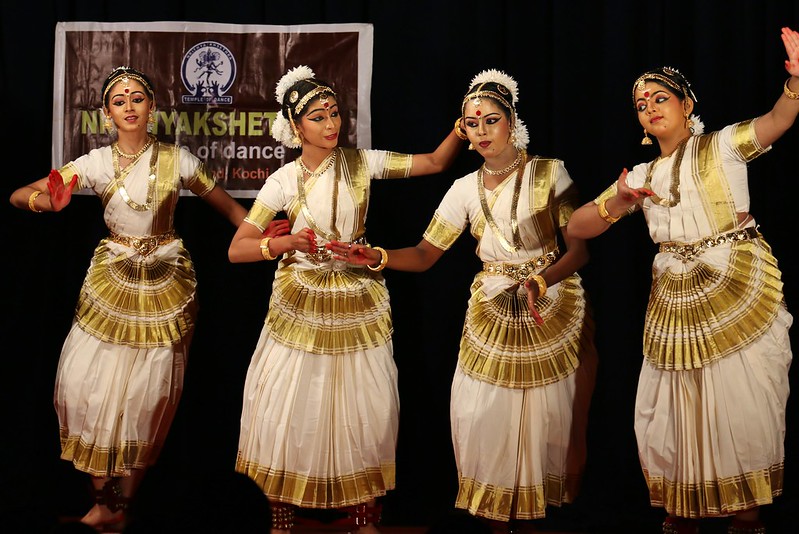
India is a culturally rich country. The Vedas form the core of the vast diversity of art forms that appear in the country today. Kerala is a state in the southern part of the Indian Peninsula that boasts of a rich civilization of traditional heritage that finds its roots in the Indian mythical literature. The place houses two of the eight major classical dance forms in India– Kathakali and Mohiniyattam.
In this article, we will talk about the Mohiniattam Dance form which draws its essence from the Natya Shastra, which is a prehistoric Sanskrit text on Performing Arts.
Sagar Manthan and Mohiniyattam
The word ‘Mohiniyattam’ is made of two words- ‘Mohini’, who is an enchanting and seductive female avatar of Lord Vishnu, and ‘Attam’, meaning dance.
Mohini is a Hindu mythological manifestation who appeared during a clash between the Devas (the good) and the Asuras (the evil) when the Asuras gained control of the Amrita (ambrosia for immortality). Mohini appeared on the scene carrying her youthful charm, seducing the Asuras to gain their confidence. The Asuras, enchanted by the enticing personality of Mohini, gave the Amrita to her to distribute it among their fellow Asuras. Mohini took the Amrita and gave it to the Devas instead, depriving the Asuras of obtaining immortality and thereby saving the land.
Mohiniattam is one of the classical dance forms that traces its descendence from the Natya Shastra. This treatise on dance drama was written by an ancient scholar named Bharat Muni. It originated in the sixteenth century and gained popularity during the eighteenth and nineteenth centuries when the Indian princely states started recognizing and supporting various dance forms.

Contribution of Swathi Thirunal Rama Varma
It was the early nineteenth century that saw tremendous growth and modernization of this art. It is credited to Swathi Thirunal Rama Varma, the then Hindu king of Travancore, . A brilliant poet and a music composer, Swathi Thirunal funded and developed a joint team of Bharatanatyam and Mohiniyattam artists. He contributed significantly to the promotion of the learning and execution of this beautiful dance form.
Censure During British Era
The dance had to face severe criticism and prohibition during the colonial rule. It was a consequence of the British ideology of sexual tyranny and condemnation of the Hindu religion. The art was then revived, particularly by a Malayalam poet, Vallathol Narayana Menon in the 1930s. He helped in lifting the ban on dancing in temples in the state of Kerala and established a dance school to promote Mohiniyattam studies and practices.
Mohiniyattam Performance
Mohiniyattam is a solo dance form which is generally performed by women. The outfit and movements associated with this dance symbolize the majestic charm of the women of our country. Performers don a beautiful ‘Kerala Kasavu Saree’; off-white or creamy white along with prolific borders exhibiting a rich golden color. The saree combined with the makeup and jewelry; gives an elegant, heavenly and traditional look to the performers.
The performance contains seven items, starting with the offering of prayers to Goddess Bhagavati and Lord Shiva, involving mimicry for conveying the underlying story and interpreting the melodies via postures and movements. The complete structure and procedures are explained in an elaborative manner in the Indian Dance texts.
Mohiniyattam – A Gem from Kerala
Mohiniyattam is an invaluable part of the cultural heritage of our country. It is one of the eight major dance forms of our country. The dance form has a rich history and is sacred to the south Indian state of Kerala.
The art is a symbol of equality and explains the great relevance of women in the history of our nation. The performance, complemented by the makeup and outfit demonstrates the elegant and charming side of the traditional women of India.

Pingback: Eight Classical Dances of India As Per Sangeet Natak Akademy - Auchitya
Pingback: Eight Classical Dances of India As Per Sangeet Natak Akademy - Auchitya
Pingback: All Folk Dances of India - Auchitya
Pingback: All Folk Dances of India - Auchitya
Pingback: 8 Classical Dances of India As Per Sangeet Natak Akademy - Auchitya